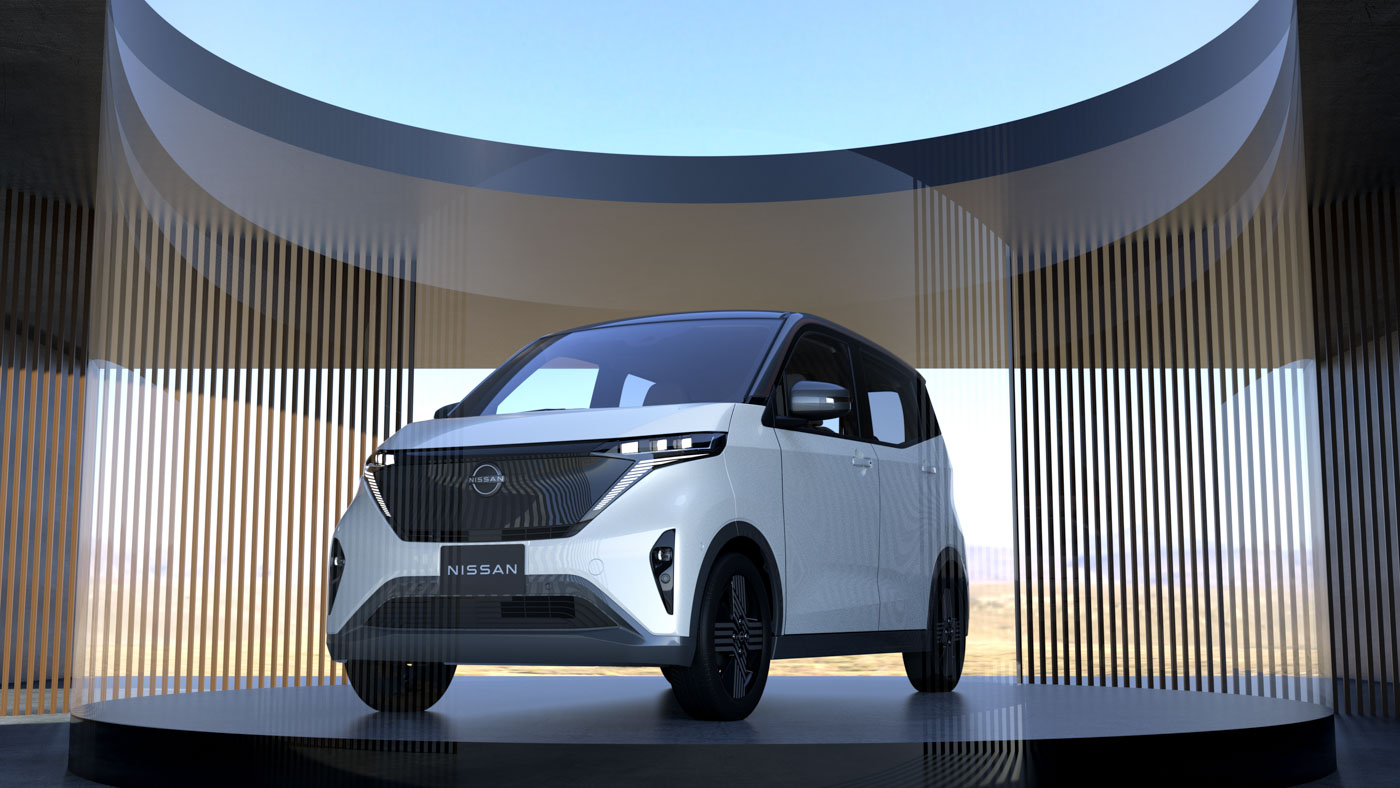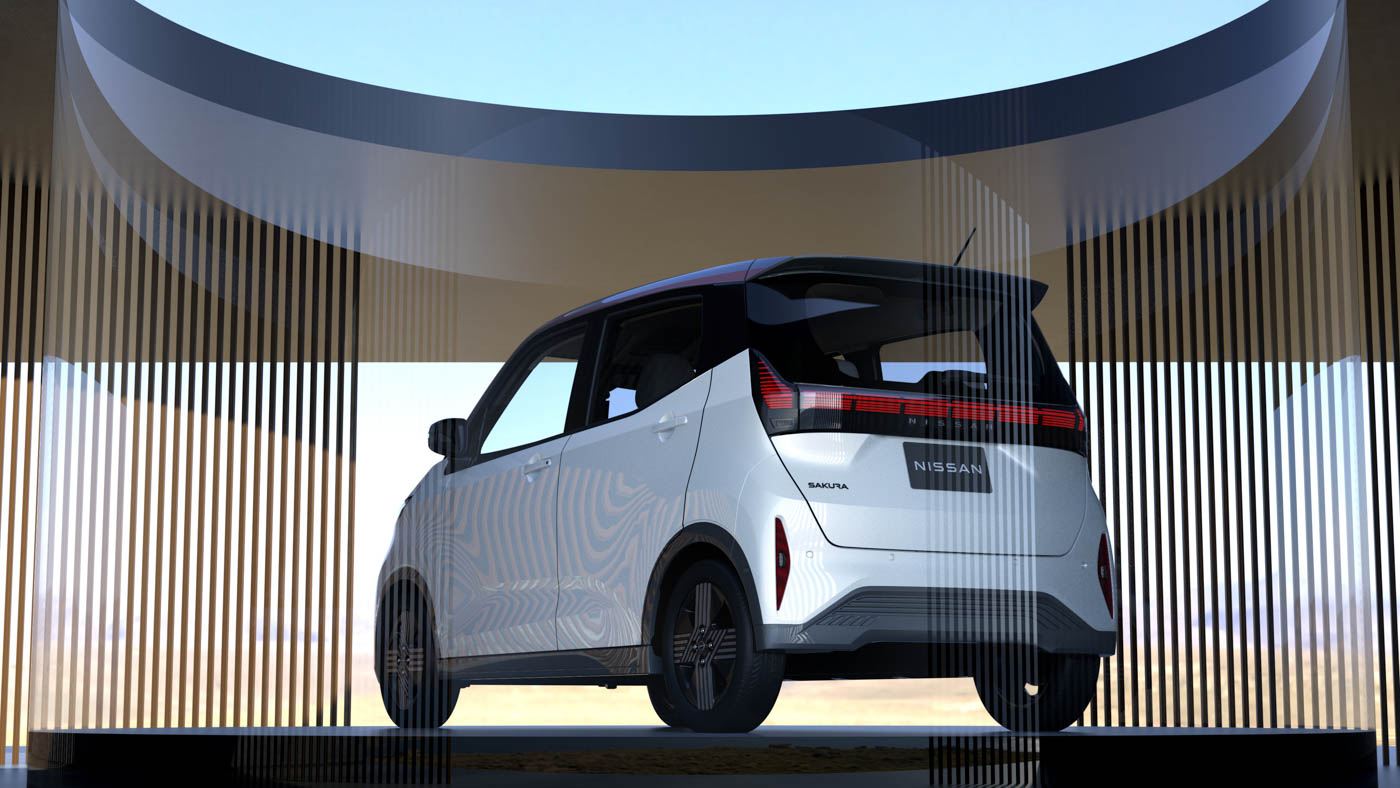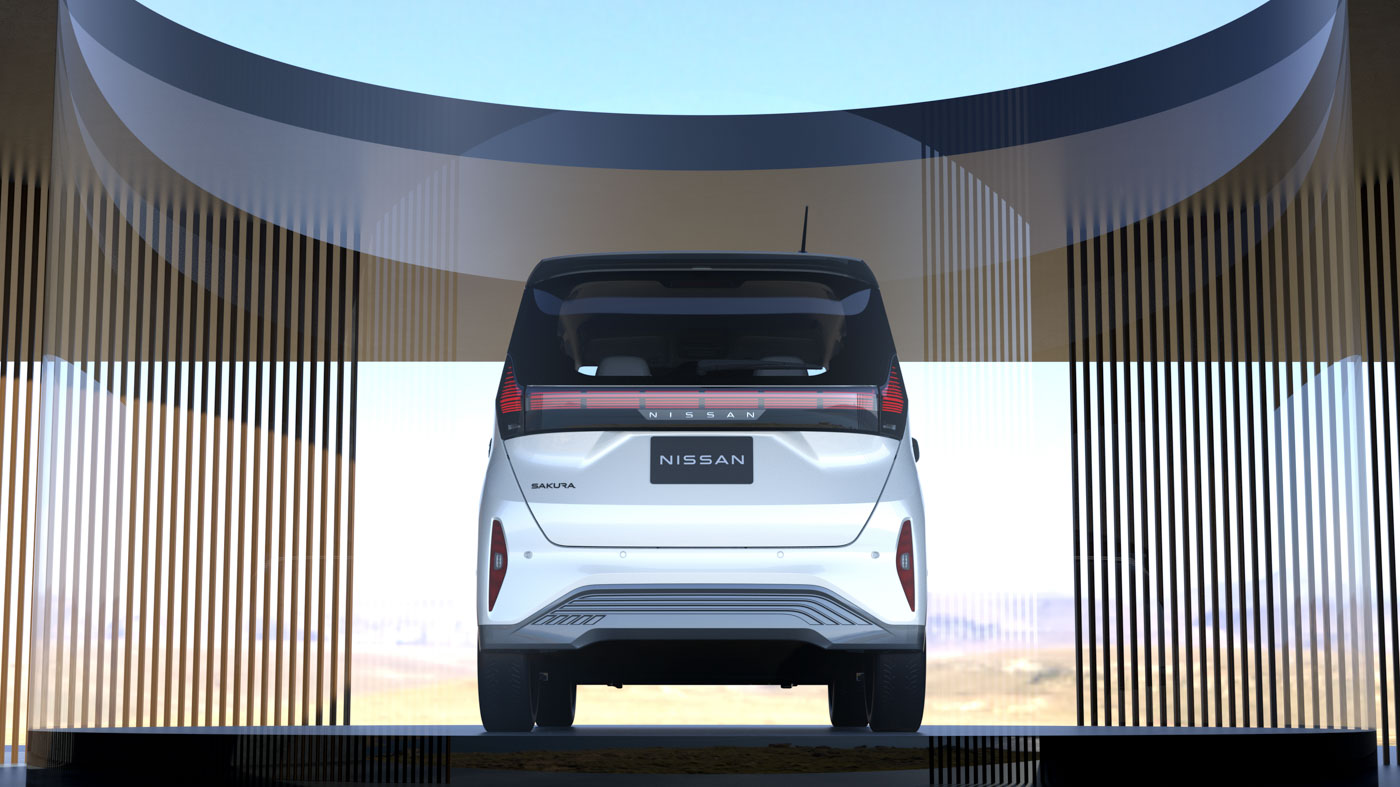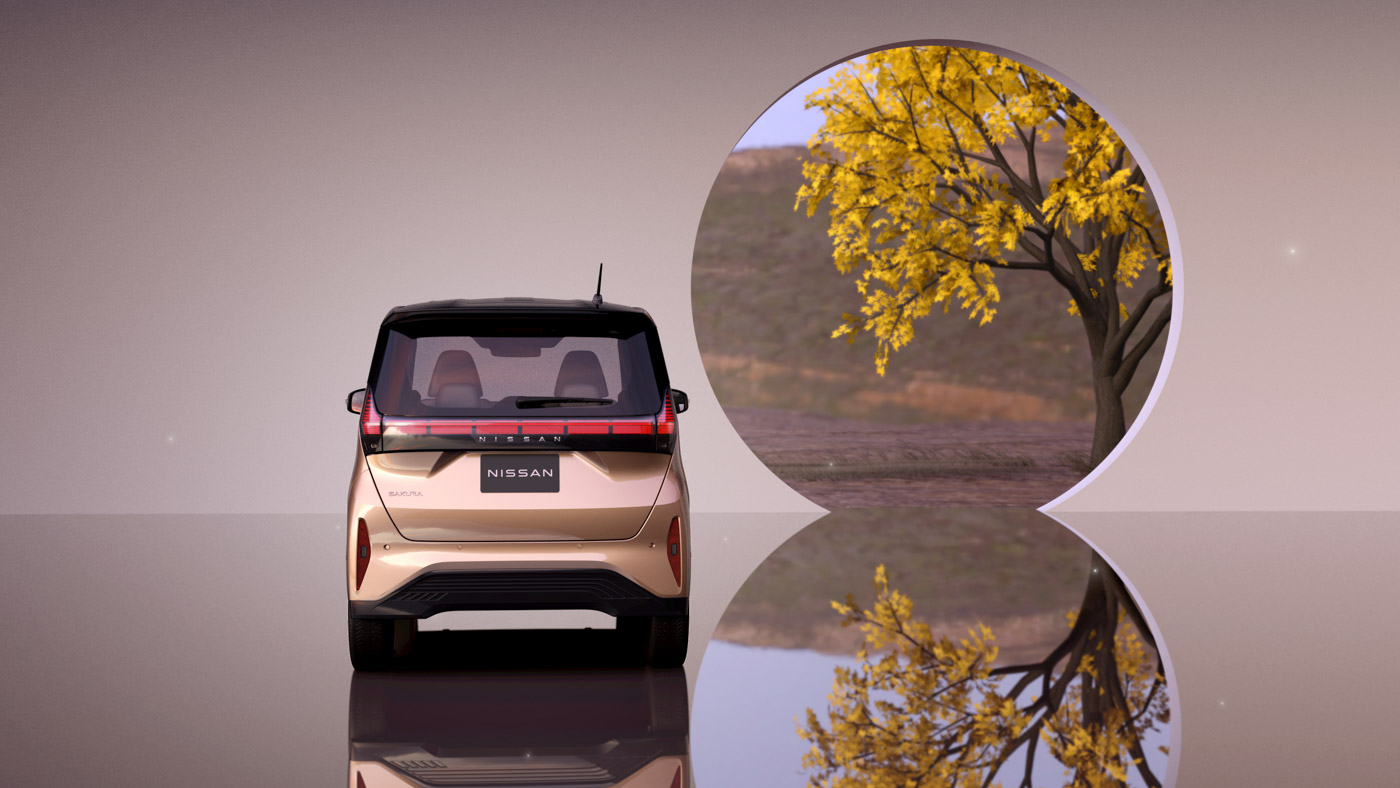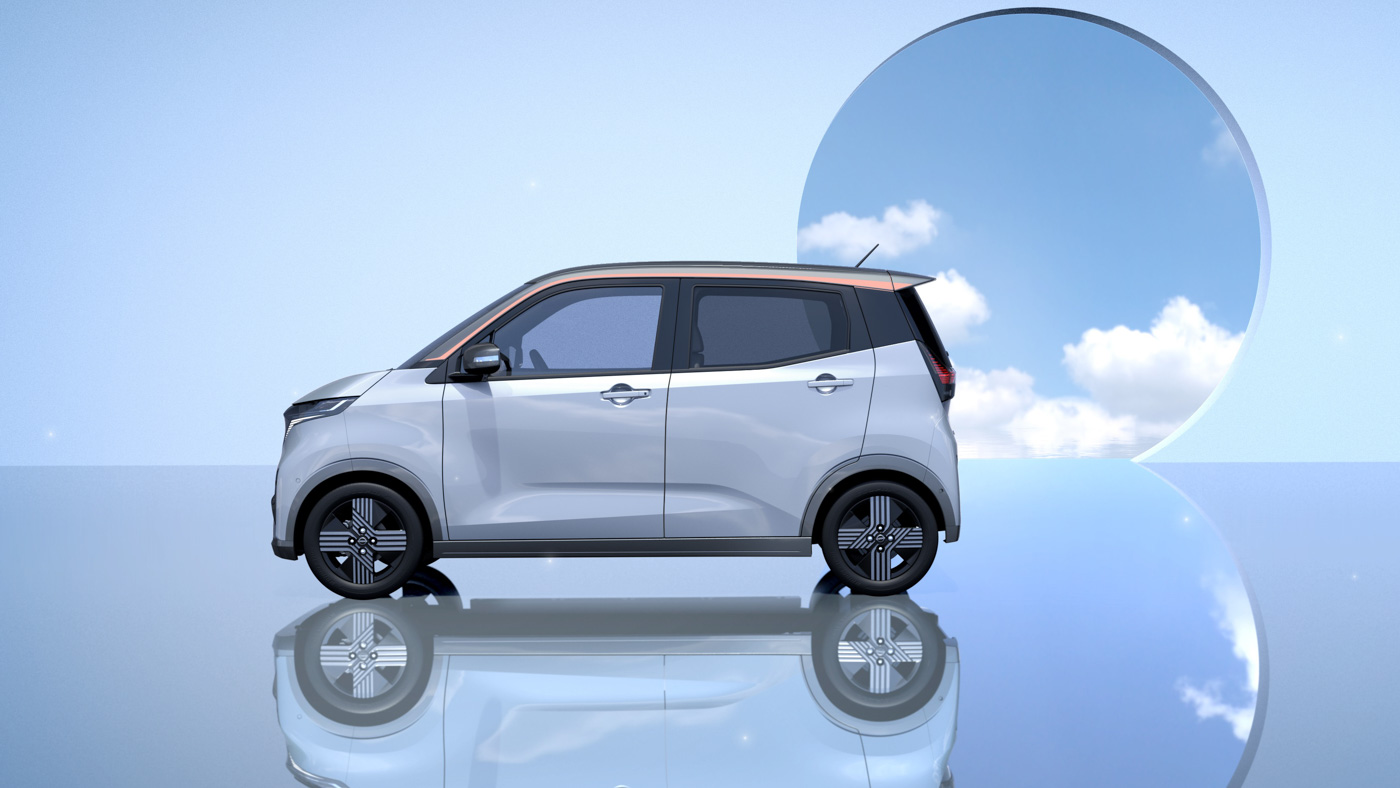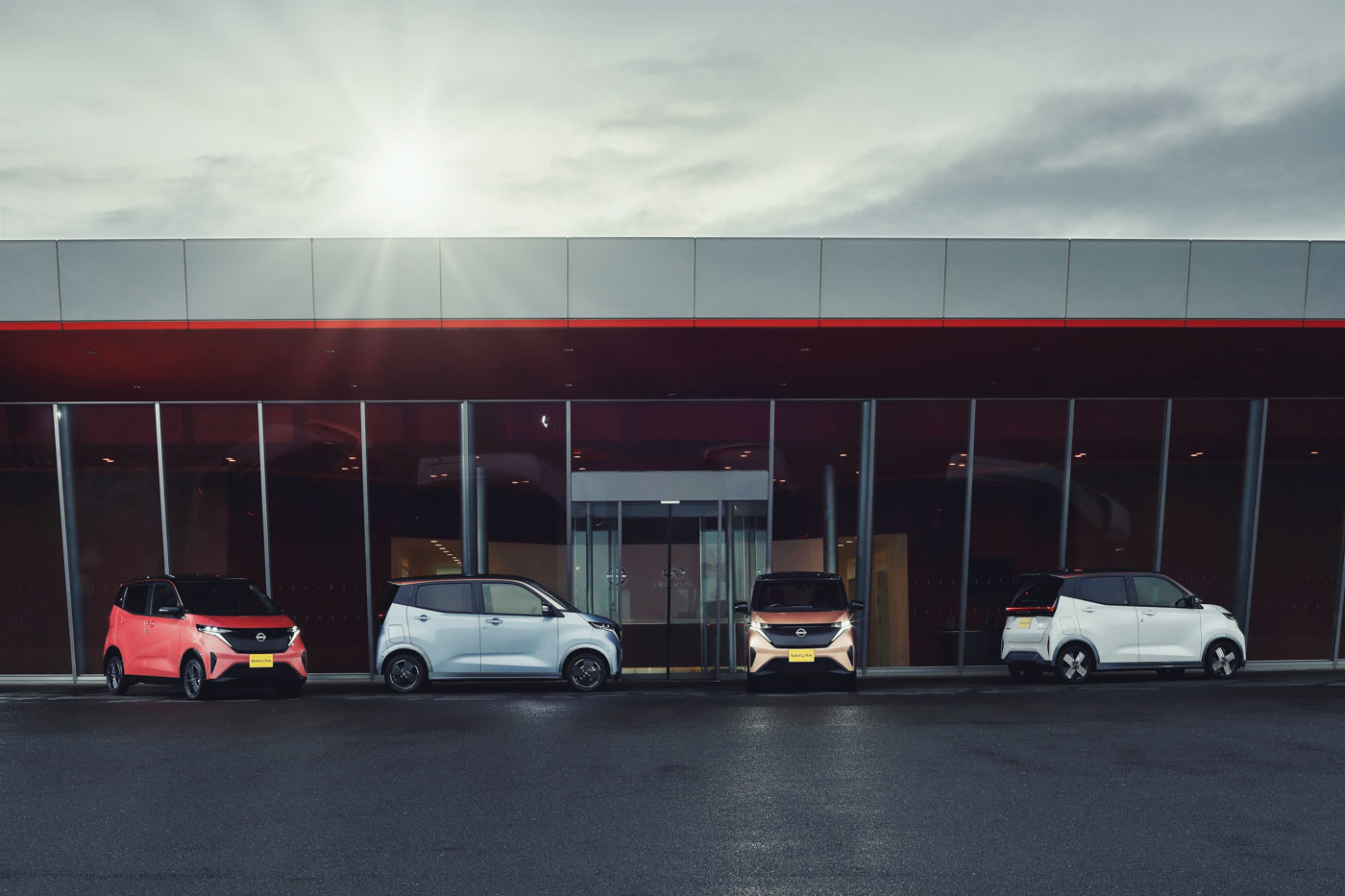It’s called the Sakura and as you’d expect, it’s named after the Japanese Cherry Blossom. Just like how most would go “Awww” over the sight of Sakuras, it’s hard not to have the same effect on Nissan’s new electric minivehicle or ‘kei car’ as it is known in Japan.

Its design comes with purpose too. The slim headlamps do not only look futuristic, but its triple beam projector – a first in a minivehicle – also increases visibility at night.

You’d definitely see this tiny one up ahead with taillamps that stretch across the tailgate; it should be more noticeable than the bloom of a million Sakuras.

The design of the aluminum wheels is inspired by the Japanese ‘mizuhiki’ decorative knots that are commonly found on gift envelopes and packages.

Moving inside, the cabin is much like what you’d expect of a modern Japanese living room, in a super-compact apartment in Tokyo, where cars like the Sakura are made for.
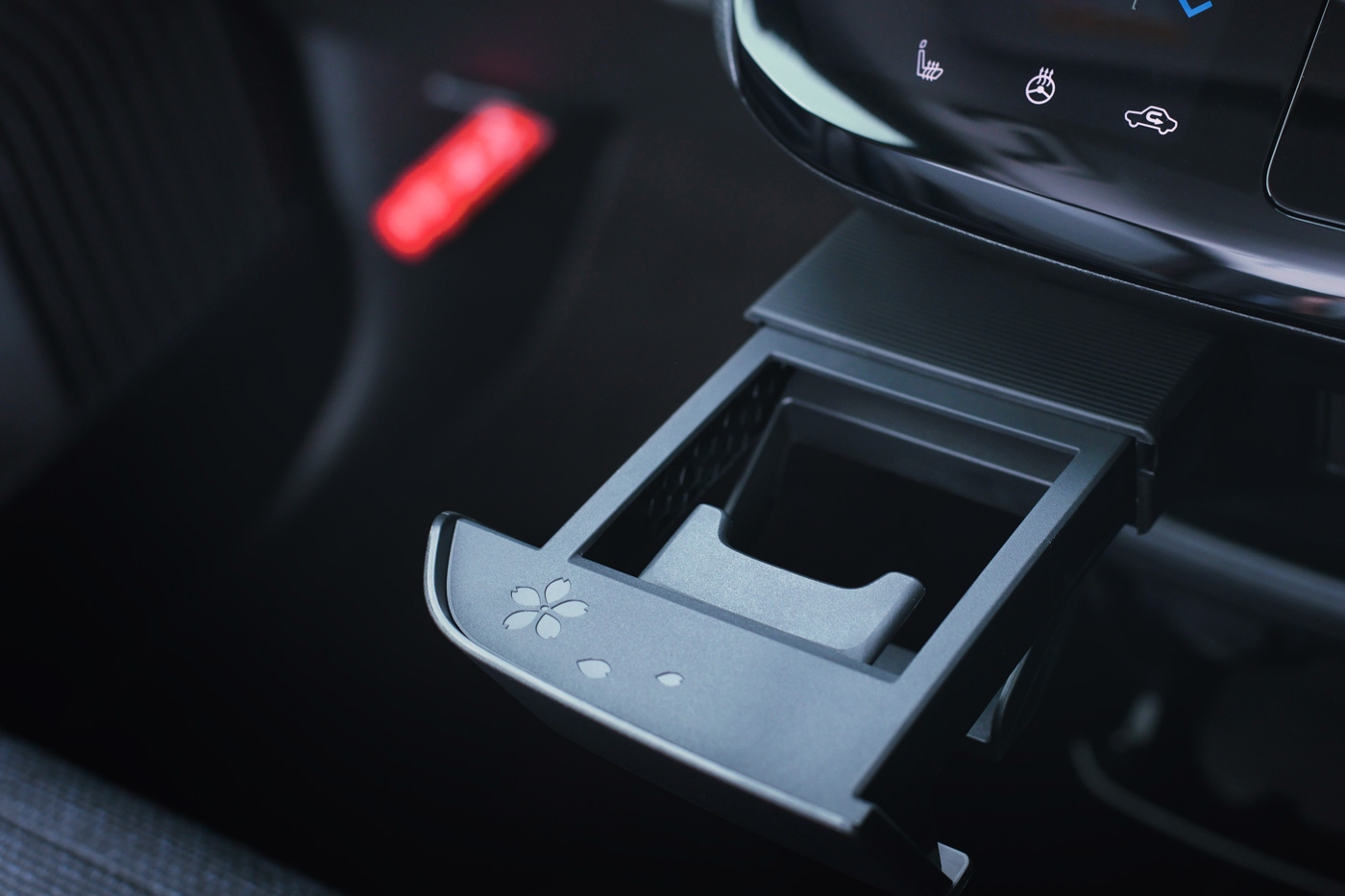

Its soft colour tones are soothing to the sight and if that’s not serene enough, the cabin is even ‘decorated’ with little Sakura motifs in the least expected areas.

Just like a modern Japanese living room, the Sakura is not short of technology. It’s got a 7-inch digital meter, an even larger 9-inch touchscreen display with Apple CarPlay and Android Auto along with on-board navigation.

In addition, it’s equipped with Nissan’s ProPILOT driver assistance system with autonomous braking features, lane-keeping assist and adaptive cruise control. It’s also the first minivehicle to be able to park itself, with the ProPILOT Park system.

Powering the Sakura is a 20 kWh 350 volt lithium-ion battery that drives the front wheels through an electric motor. It gets 64 hp, 195 Nm of torque and a 130 km/h top speed. There are three different driving modes in the little Sakura – Eco, Sport, and Standard – along with a one-pedal driving system called the e-Pedal step system.

Nissan says it can return 180 km of driving range, taking just eight hours to be fully charged. The battery can also be used to power a typical Japanese household with electricity for a day in the event of an emergency.
GALLERY

